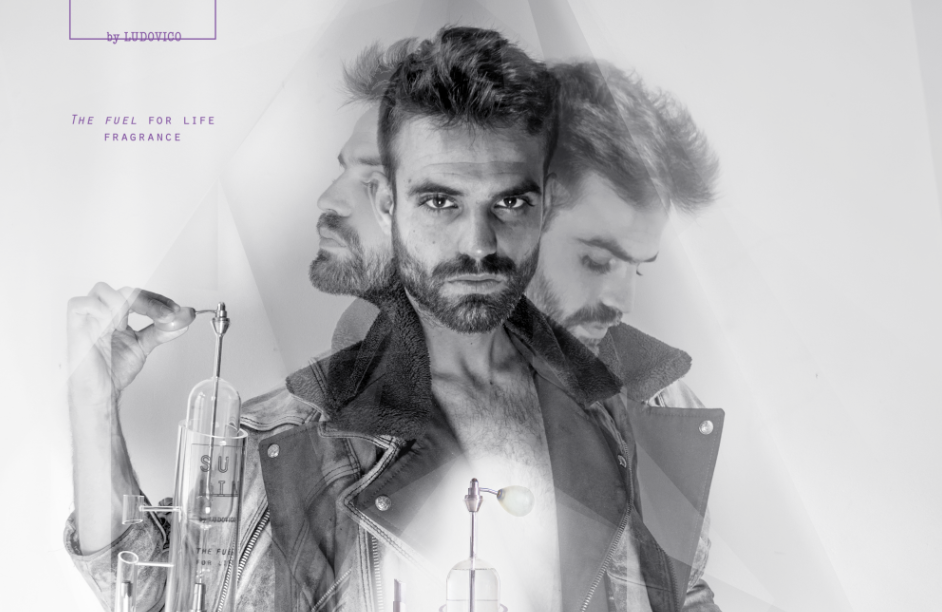12 Questions with Alves Ludovico - Magazine Issue02
Alves Ludovico is a selected and featured artist in Al-Tiba9 magazine ISSUE02, interviewed by Mohamed Benhadj about his photographic project SULIN, THE FUEL FOR LIFE.
The super-complexity drives Alves Ludovico’s fascination. Through his work, he enhances the limits of his perception and comprehension. Ludovico’s creations represent a personal case study, a segment from the super-complexity that he sorts out and where he finds the tools for meaning and decision making.
Please describe the intention behind your art. How do you successfully express this intention?
My work stands as a reaction to my surrounding environment and everyday experiences, often, they figure a traumatic experience, a critical view or a prediction. Analyzing familiar surroundings through my artwork seems to allow me to develop action tools for a better understanding of the world’s complexity and problems. My artwork has a strong narrative component with that I hope to be capable of immersing the viewer into speculative scenarios, where I share my analysis and action tools.
Can you talk a little about your formative years as an artist?
I am currently mastering contemporary design at Aalto University in Finland. I hold a BA in Industrial design from the University of Evora where I got to learn the essence and rules of pragmatic design. Throughout my academic path, I had received a mobility Grant BA, ArtEZ Institute of the Arts in Holland where I rediscovered design as an intellectual tool. I also did one year of master's program in product and spatial design in Oslo national academy of arts in Norway.
Your work is very graphic and related to the human identity and world industry. How do you turn this to an artistic inspiration?
Human’s actions are the defining factor of human identity. The industrial world is a good case study to understand the values behind the actions and the world's organization.
Where did you get your imagery from (What, If any, Sources did you use)?
Family workshops were my childhood playground. Shapes, colors, functions, details, and tools drove me to a fascination for seeing projects growing. Later on, I just got amazed by the object ́s inherent strength.
Photo courtesy Alves Ludovico©
Your work plays with the placement of the images, destruction of the image, interaction between advertising and social research all with very expressive colors and visuals. You also put yourself into your work, becoming an object in your photographs – like to keep you visual work as much closer to the audience as it is to you personally, to share your personal life experience through “Sulin, The Fuel For Life”. Can you talk about these complex combinations?
I like to keep my concepts tight with my own experience otherwise I could not consider them meaningful, without meaning I am unable to develop a concept. I attempt to engage viewers by sharing my strengths and vulnerabilities, building upon that an intimate and meaningful dialogue. Understanding and compassion are triggered by familiar thoughts.
I hope viewers can identify themselves with my personal stories. “Sulin, The Fuel For Life” among other things represents a claim for social space for diabetics and people with other disorders. As a diabetic person I have not been always comfortable administering insulin in public, many times I felt observed by judging eyes. Not only because of the act itself but because I need to undress some body parts when I do it. Nakedness is so many times normalized in perfume advertising but not always correctly judged in my medical need. Acknowledged dialogue is crucial to normalize medical treatment and redefine social spaces reasonably.
Photo courtesy Alves Ludovico©
Your process includes photography, graphic design, mixing different marketing tools and exploring new techniques that are not traditional in photography. In other works, you combine advertising notions from the past and the present, the black and white sensations with some discrete colors. How can you describe that for our readers?
“Sulin, The Fuel For Life” is a perfume 99,5% Insulin and 0,5% secret element made perfume that can be experienced. It also comprehends a physical dimension, a perfume flask designed to convey considerations. The chosen language to advertise it is like a hack from the perfume commercials, black and white is many times used to romanticize a cinematographic sphere. Sulin’s posters are black and white except the flask itself, the idea is to promote the concept and normalize the user.
You’ve mentioned that your project “Sulin, The Fuel For Life » creates a bridge between the medical and perfumery world. How does the public integrate your art into their life?
Insulin is for diabetics a ‘’fuel for life’’ and for that reason we value it. A few years back a perfume that uses the slogan ‘’fuel for life’’ was released. I guess we do use wicked advertising that delivers and consequently creates inadequate values. The diabetic population would be the 3rd biggest nation in the world if all the diabetics people are to be gathered as one country, according to the Health Word Organization. We represent as big a market as the perfumery. Worldwide many diabetic people do not have access to medical services to control the disease. Sulin is a fragrance that seeks to open discussion on smelly issues.
Was commercial art an influence on your work or how it was made?
It is. I have been trying to mimic the same “fishing baits” used in advertising to convey considerations.
They say if you could be anything but an artist, don’t be an artist. What career are you neglecting right now by being an artist?
Probably a nurse or somewhere in health care. After I got the diabetes diagnosis, my family thought it would be the best for me.
What current series are you working on?
I am taking into account my relationship with sugar and the fact that as a diabetic person sugar is a poison that harms my body. From this fact, the foundational statement of the proposal takes shape from the desire and will reconvert sugar into a building and construction material.
What is your favorite genre of music to listen to while working?
While I work I like to listen to music which blends classical and electronic music.
Do you have any upcoming shows or collaborations?
I will be part of a group exhibition ‘’ Emoveo” during Helsinki design week in September. In November, I am holding a solo exhibition in Helsinki at Kallio Stage.










